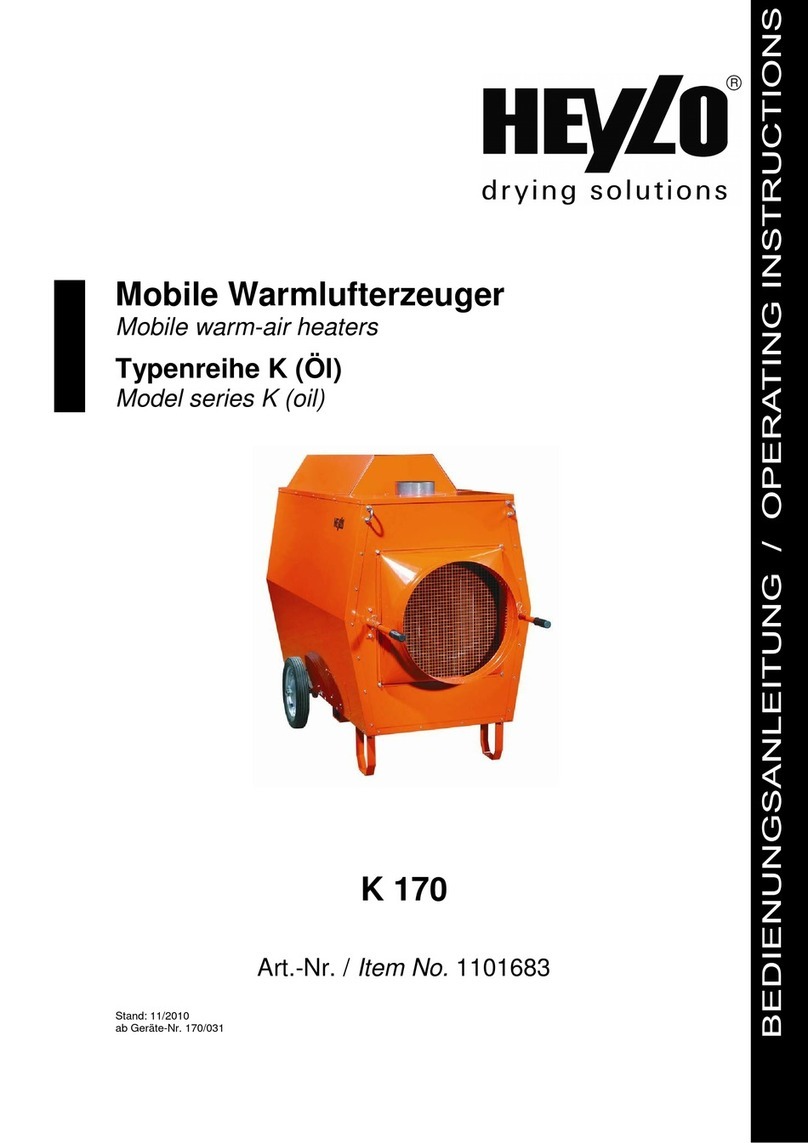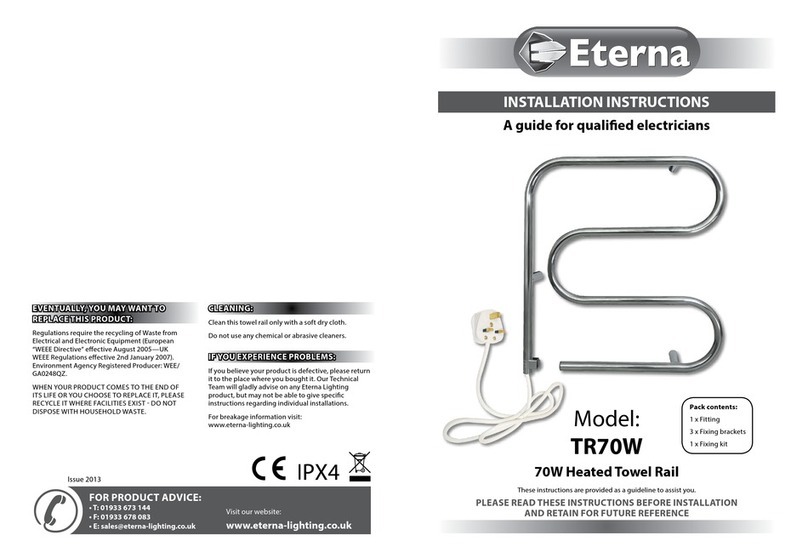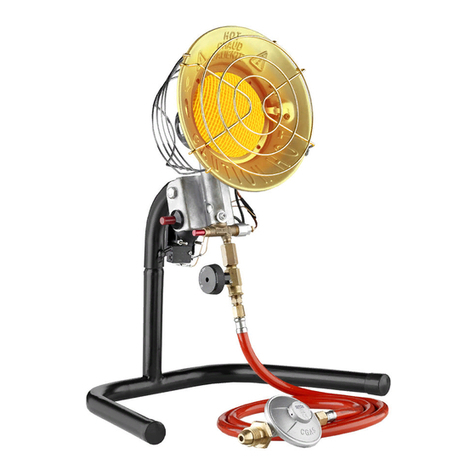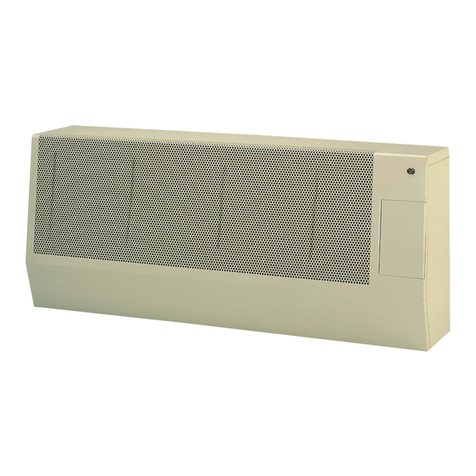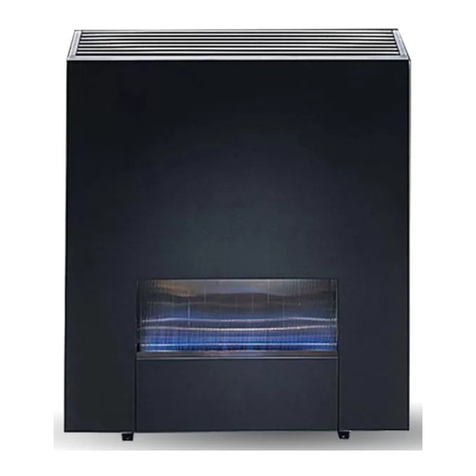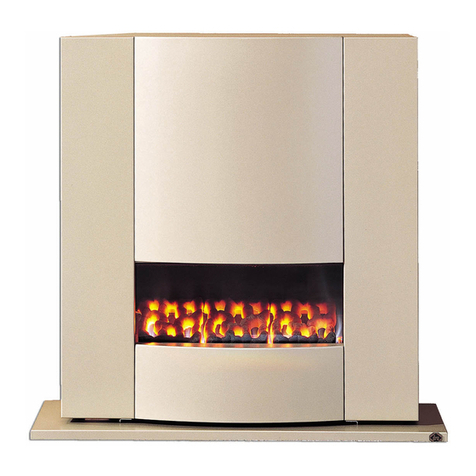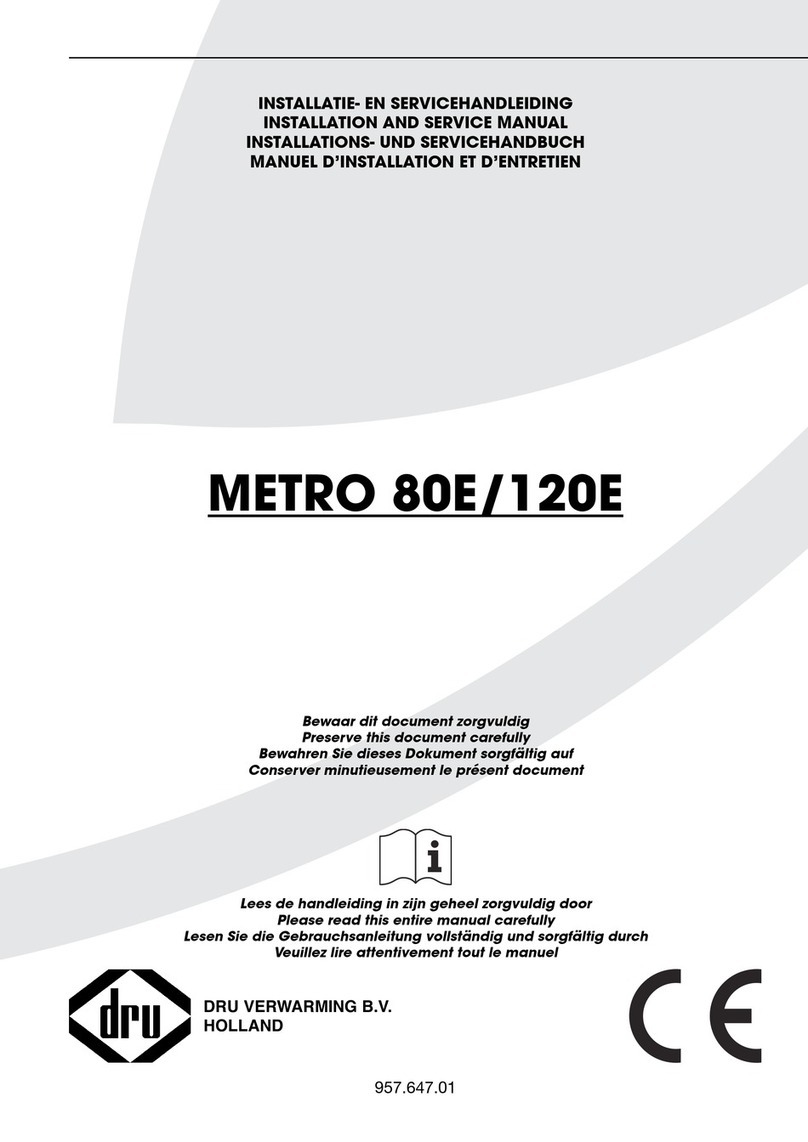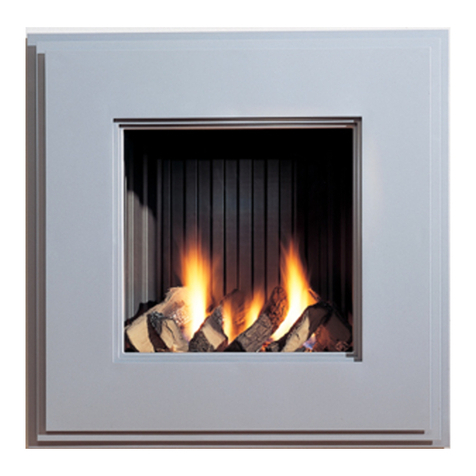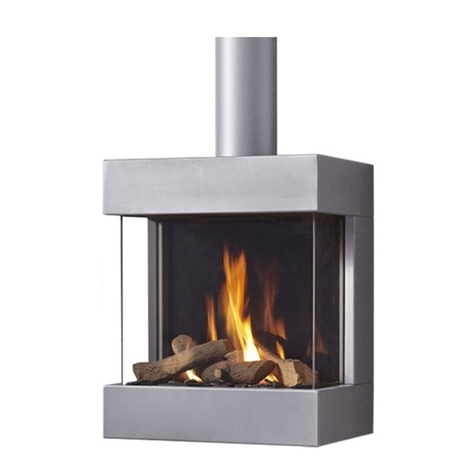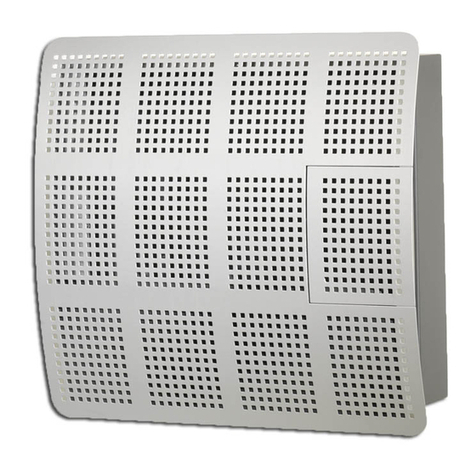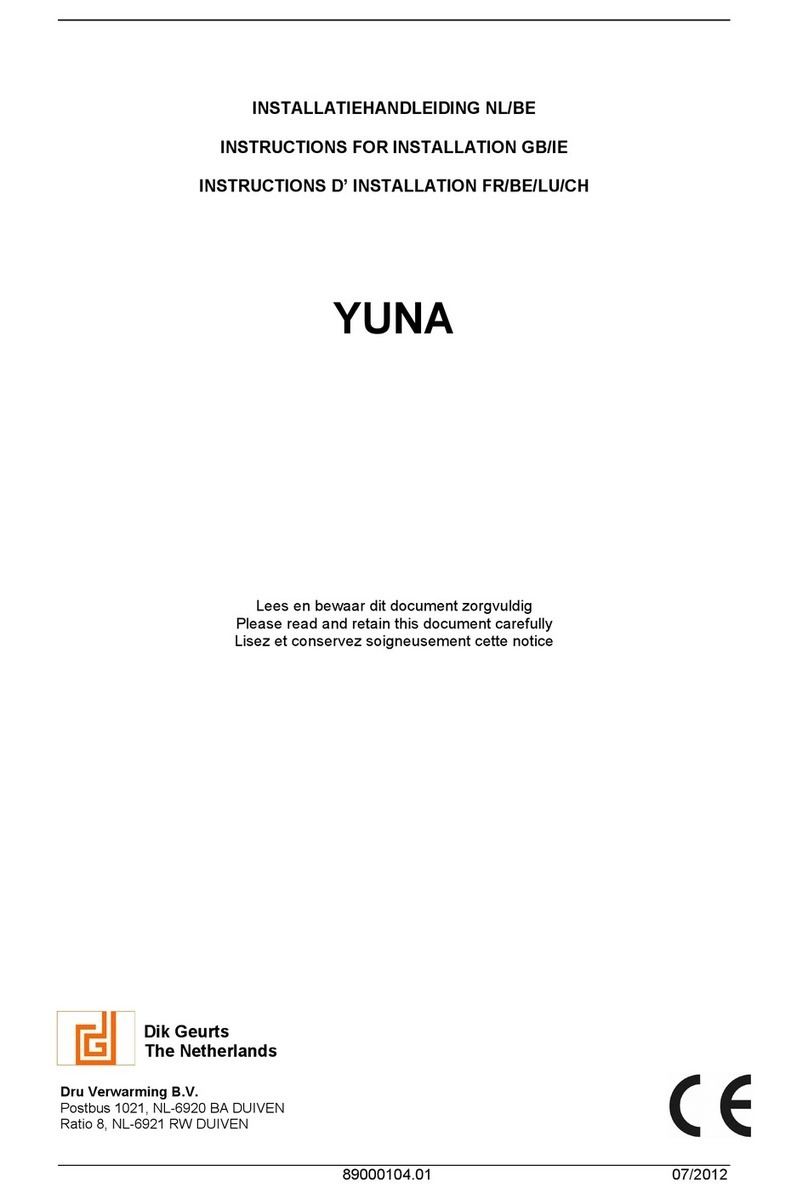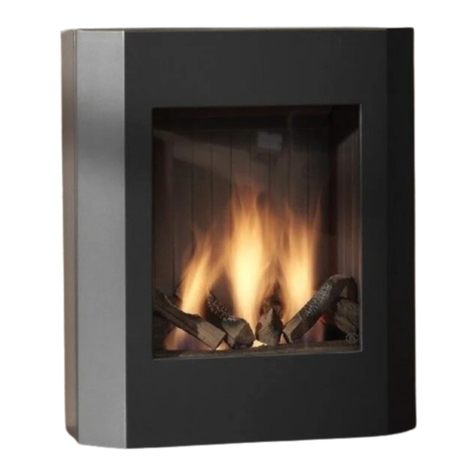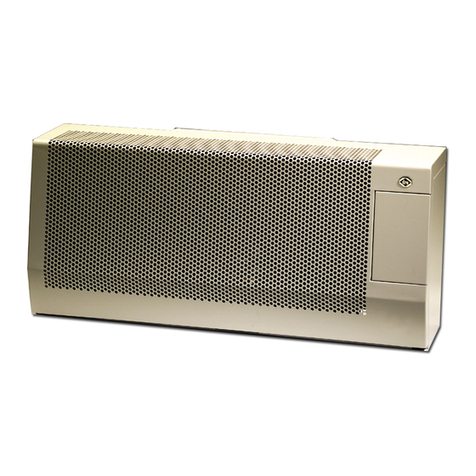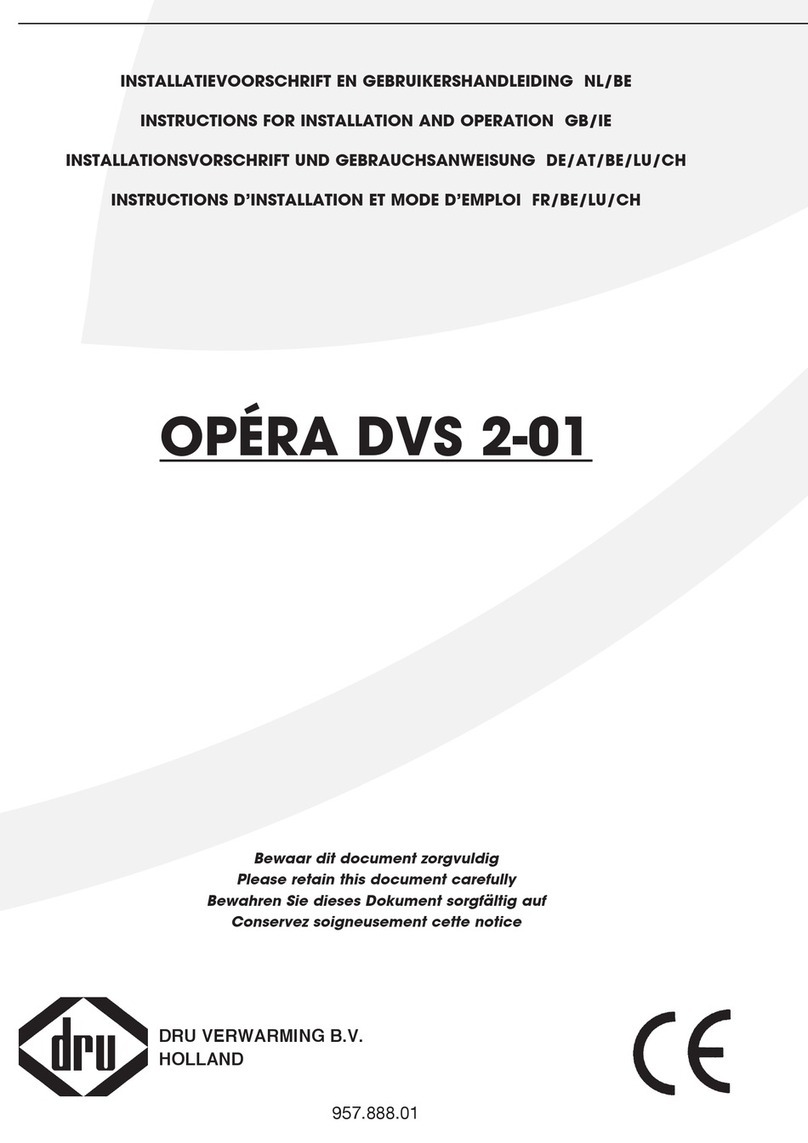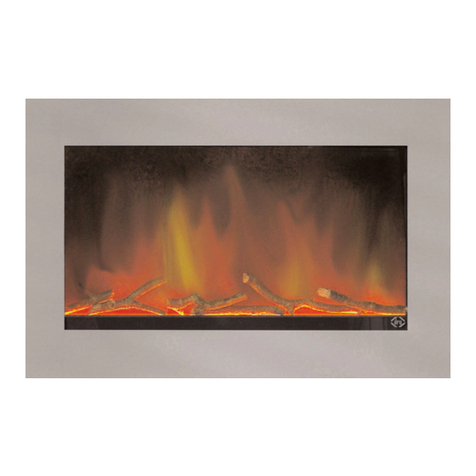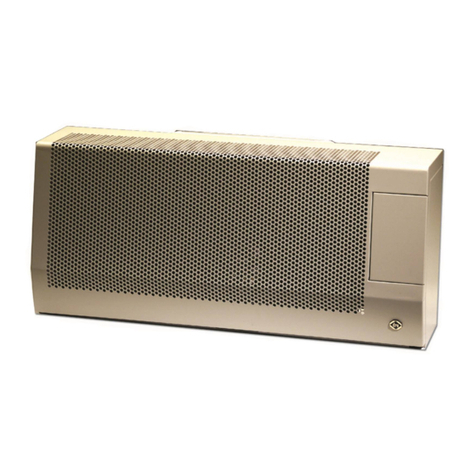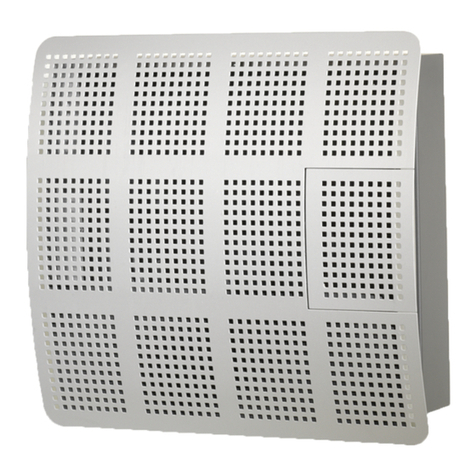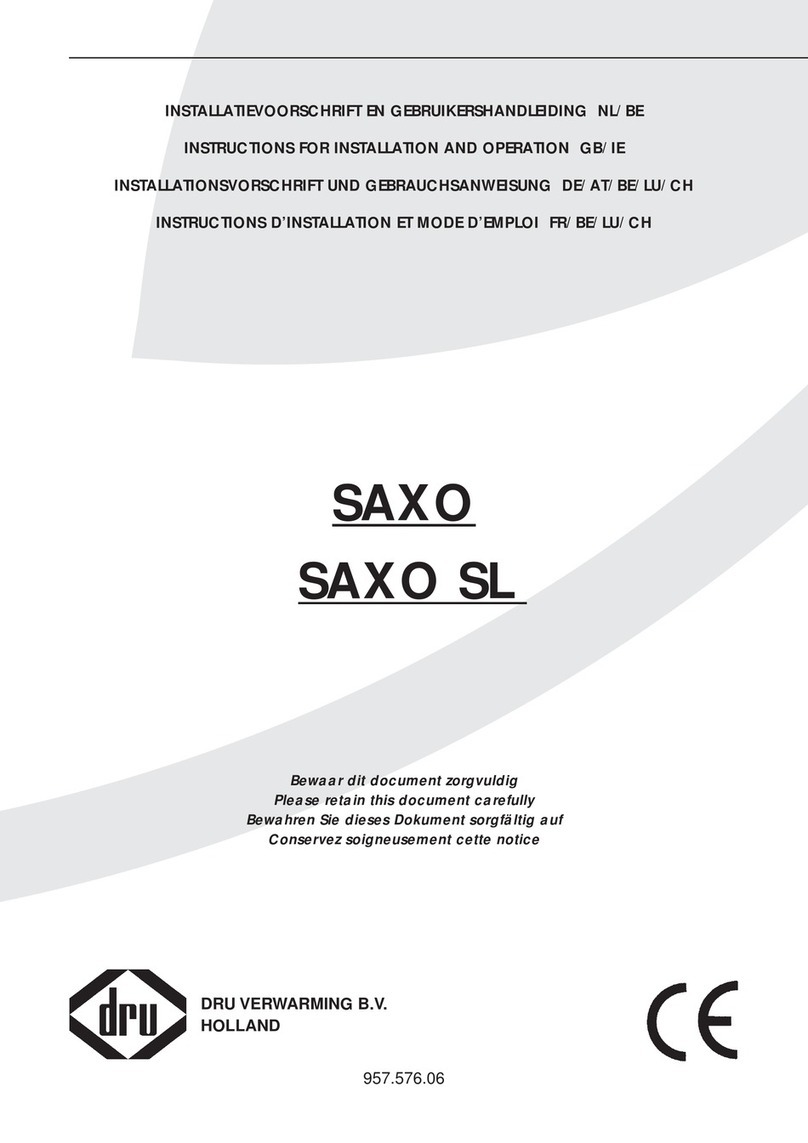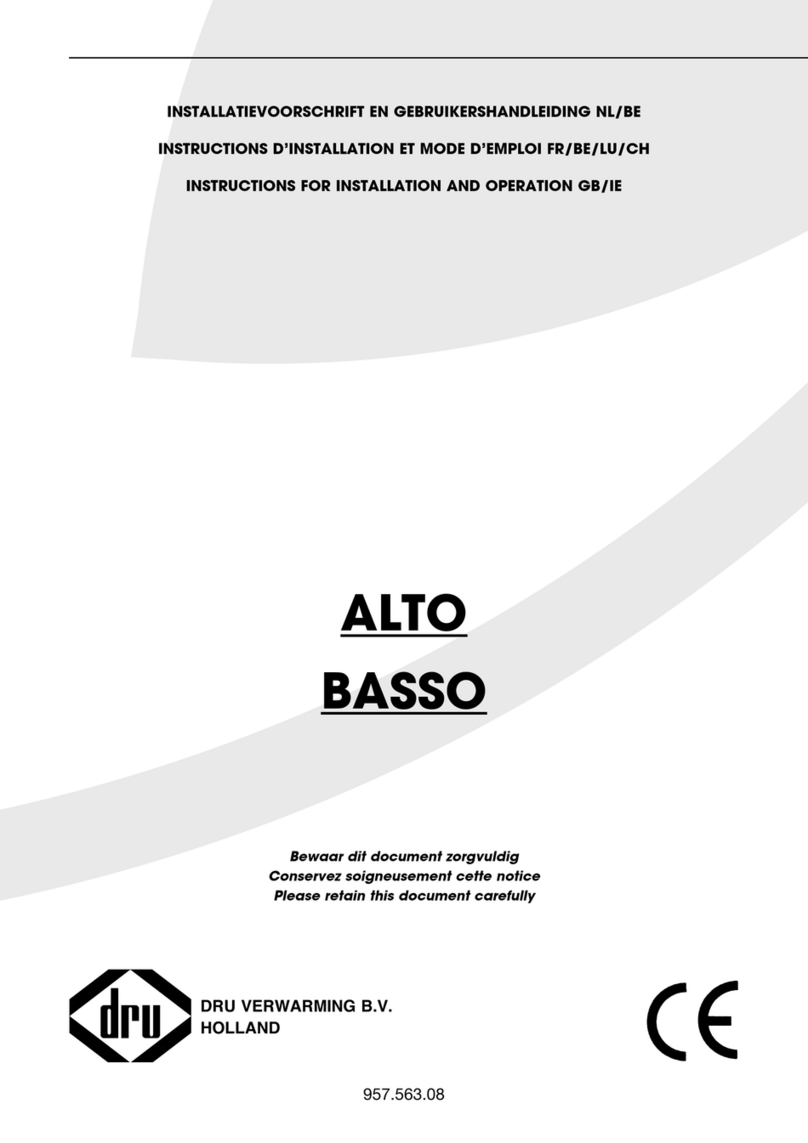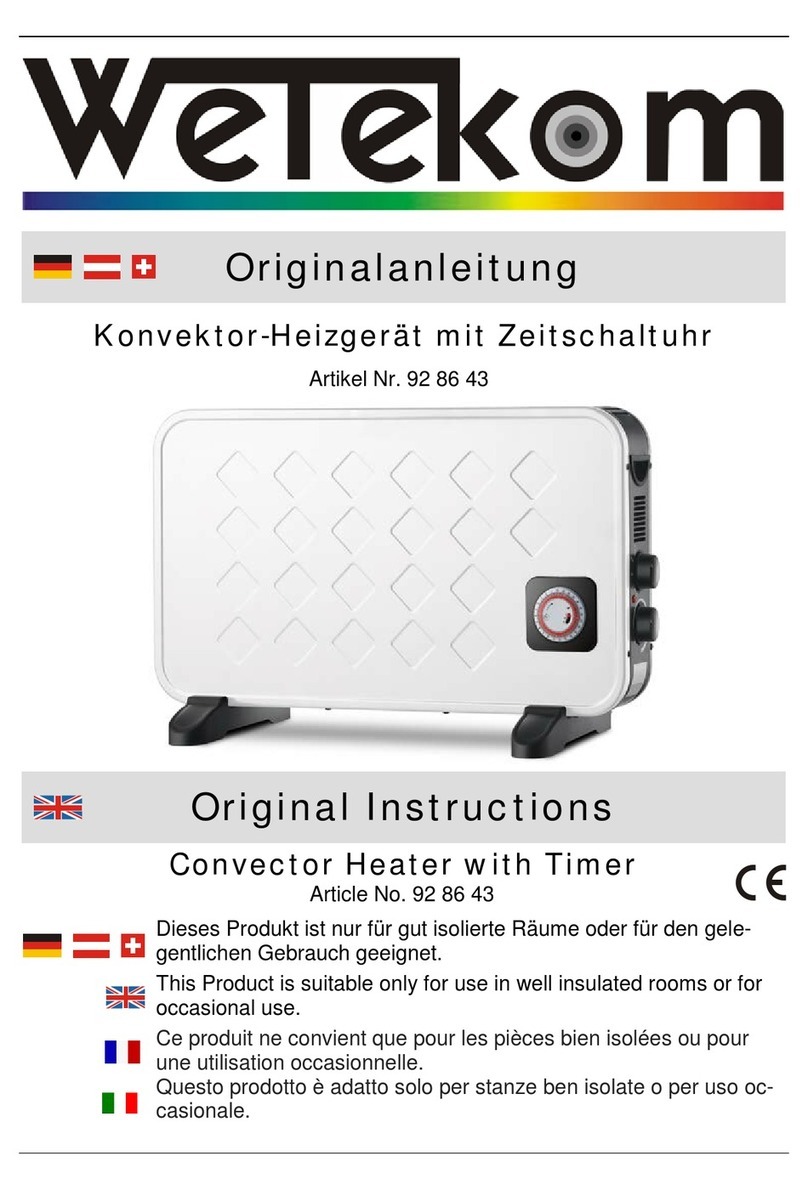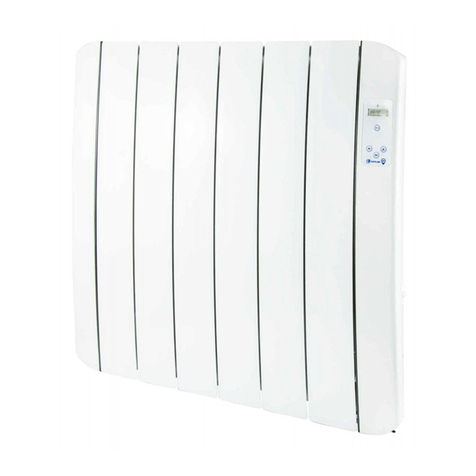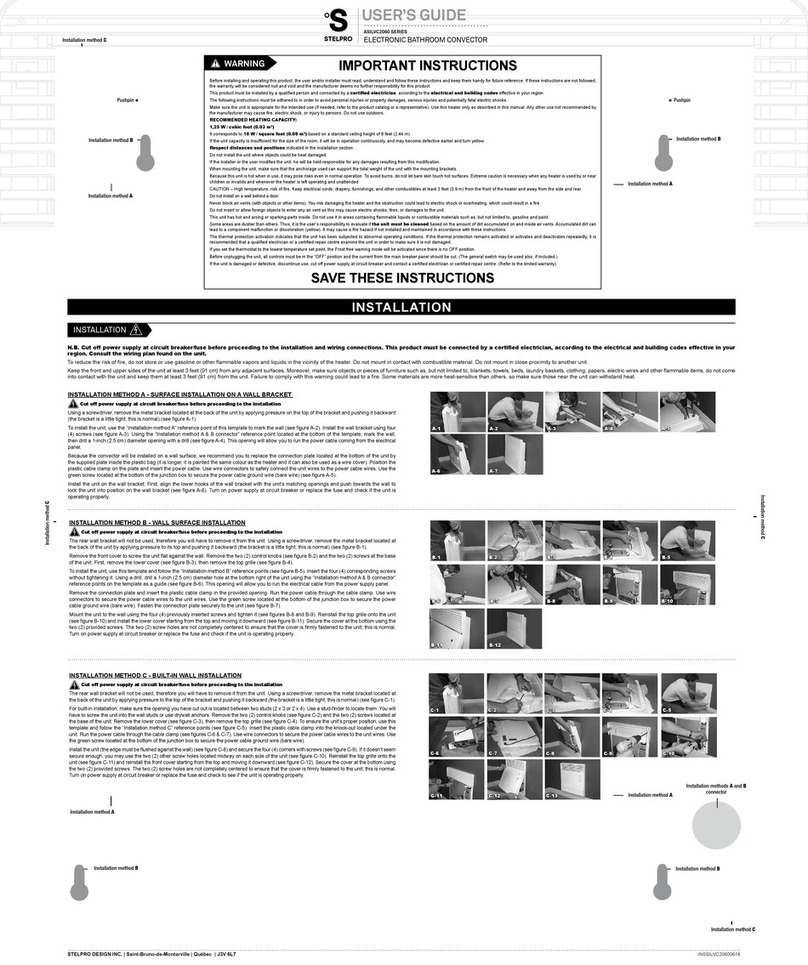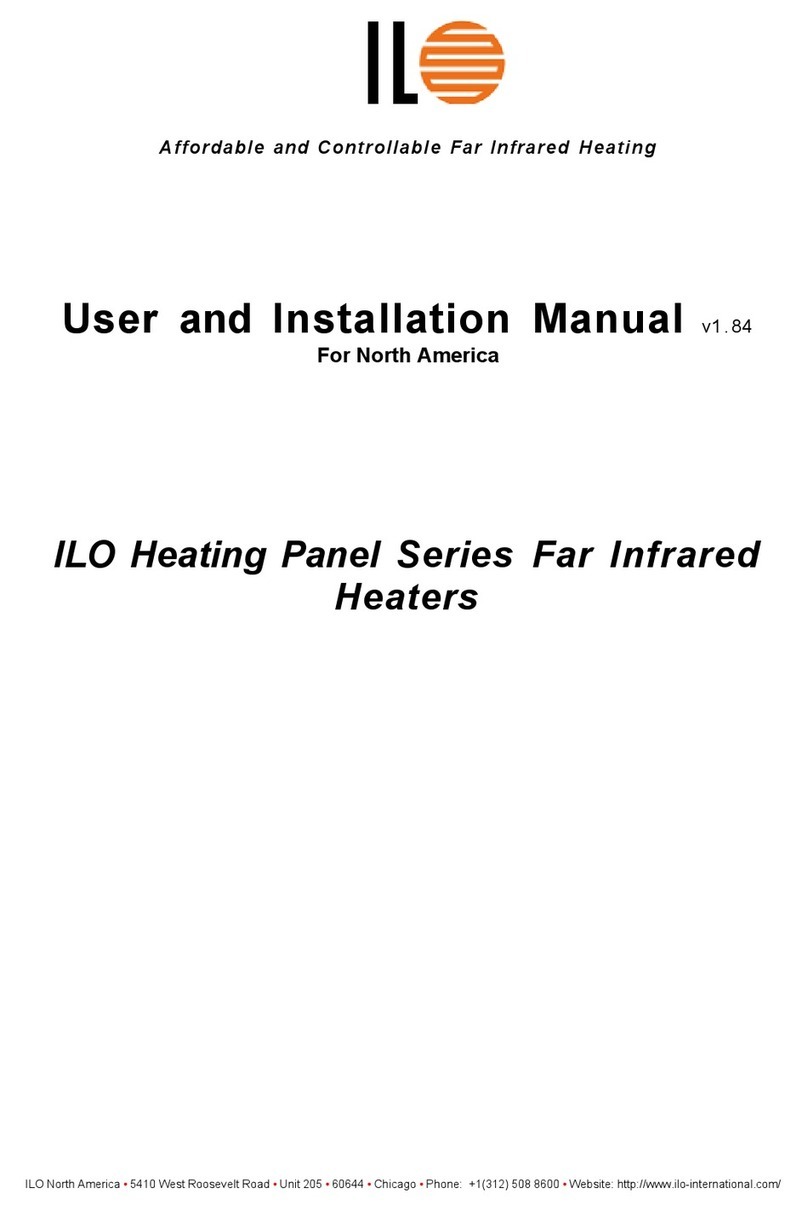
4. UITPAKKEN
Schenk aandacht aan de onderstaande punten bij het
uitpakken van de haard:
Controleer het toestel op transportschade, plaats nooit een
beschadigde haard;
Controleer of de doos met onderdelen compleet is.
In Bijlage 1 / Tabel 1 staat vermeld over welke onderdelen
u na het uitpakken dient te beschikken;
Door het transport kunnen onderdelen verschoven zijn,
controleer de ligging van de keerplaat en vuurvaste platen.
(zie handleiding).
Controleer de werking van luchtschuif, deursluiting en het
eventuele draaimechanisme;
Verwijder eventueel achtergebleven straalgrit uit de
luchtschuif;
Neem zo nodig contact op met uw leverancier;
Voer de verpakking af via de reguliere weg.
5. INSTALLATIE
5.1 Voorschriften
Installeer de haard volgens de geldende Europese,
nationale, lokale en bouwkundige (installatie)
voorschriften.
Houdt u zich aan de voorschriften/instructies zoals
vermeld in deze handleiding.
5.2 Rookgaskanaal
Voor het rookgaskanaal gelden de volgende eisen:
het rookgaskanaal moet van tevoren geïnspecteerd worden
door een specialist;
het rookgaskanaal dient geschikt te zijn voor aansluiting van
een houtgestookt toestel;
de haard dient te worden aangesloten op een enkel,
ongedeeld rookgaskanaal;
het rookgaskanaal moet schoon zijn;
het rookgaskanaal moet gasdicht zijn;
de diameter van het rookgaskanaal moet 180 mm zijn;
de trek van het rookgaskanaal moet minimaal 12 Pascal
zijn;
in een (te) sterk trekkend kanaal dient zonodig een
rookgasklep worden aangebracht;
haardpijpen moeten afwaterend naar de haard worden
geplaatst;
het rookgaskanaal dient zelfdragend te zijn en mag niet op
de haard rusten;
5.3 Voorzieningen plaatsen haard
Voor het plaatsen van een vrijstaande haard met directe warmte
èn warm water als output, dienen de volgende voorzieningen,
op de plaats van de haard, aanwezig te zijn:
een waterleidingaansluiting ten behoeve van de
veiligheidswarmtewisselaar;
een aansluiting op de waterafvoer of riolering ten behoeve
van de veiligheidswarmtewisselaar en het overdrukventiel.
Let op: Houd rekening met een temperatuur van 100 °C in
het afvoersysteem.
een aanvoer en retour van het cv-systeem;
een mogelijke elektriciteitsaansluiting bij gebruik van de
pomp (deze pomp is een essentieel onderdeel van het
systeem, maar wordt niet meegeleverd!).
5.4 Plaatsen haard
Breng geen wijzigingen aan de haard aan;
plaats de haard op een vloer met voldoende draagkracht;
plaats de haard en/of de haardpijpen tegen een wand van
niet brandbaar materiaal;
plaats de haard en/of de haardpijpen op minimaal 50 mm
vanaf de wand;
plaats de haard en/of de haardpijpen altijd op minimaal
700 mm afstand van brandbare objecten en/of materialen;
plaats de haard op een brandwerende vloerplaat die volgens
de geldende norm voor de haard uitsteekt als deze op een
vloer van brandbaar materiaal komt te staan;
dek de haard niet af en/of pak deze niet in met een
isolatiedeken of enig ander materiaal;
houdt u zich aan de eisen voor het rookgaskanaal zoals
genoemd in paragraaf 5.2.
Bepaal de plaats van de haard; de afmetingen zijn
aangegeven in bijlage 2.
Plaats zo nodig de vloerplaat.
Zet de haard op de bestemde plek.
Controleer of de vuurvaste platen en de keerplaten in de
haard goed geplaatst zijn (zie gebruikshandleiding).
Verbeter zo nodig de positie van de platen.
Sluit de haard aan op het rookgaskanaal.
Plaats een optioneel verkrijgbaar inspectie-element, indien
de afvoerpijp niet verwijderd kan worden bij onderhoud
aan de kachel. In dit halve meter afvoerelement zit een
inspectieluikje om het eventuele roet te verwijderen wat
bovenop de stalen keerplaat in de kachel ligt.
5.5 Aansluiten haard
Ga bij het aansluiten van de haard als volgt te werk (voor een
tekening van de aansluitingen zie bijlage 2):
sluit de thermische veiligheidsklep (bijlage 3 guur 1) aan op
de aanvoer (D) van de koelspiraal. Zorg dat de pijl op de
veiligheidsklep richting de aansluiting van de koelspiraal
wijst (zie bijlage 2).
sluit de afvoer van de koelspiraal (E) aan op de waterafvoer
of riolering;
plaats de dompelhuls voor de voeler (guur 3) van de
thermische veiligheidsklep in de watermantel. Dit is de sok
links boven op de achterkant van de haard.
schuif de voeler van de thermische veiligheidsklep (A) in de
zojuist aangebrachte dompelhuls. Borg de voeler met de
schroef die in de dompelhuls zit (guur 3).
sluit de retour van het te verwarmen CV-water aan op de
3/4’’ sok; deze bevindt zich aan de onderzijde van de
watermantel (zie bijlage 2) (F).
sluit de aanvoer van het verwarmde CV-water aan op de
één van de aanvoeraansluitingen (3/4’’ sok). (zie bijlage 2)
Er zijn twee aanvoeraansluitmogelijkheden:
aanvoer 1 (C) zit bovenin de watermantel en aanvoer 2 (G)
zit onderaan de watermantel. Deze laatste aanvoer haalt het
warme water uit de bovenkant van de watermantel door middel
van een buis die door de watermantel loopt. Het aanvoerwater
van aanvoer 2 is daardoor minder heet dan het water uit
aanvoer 1. Afhankelijk van de retourtemperatuur is de maximale
temperatuur die uit aanvoer 2 gehaald kan worden 80 °C.
Nederlands
Dik Geurts
5
Let op
!








